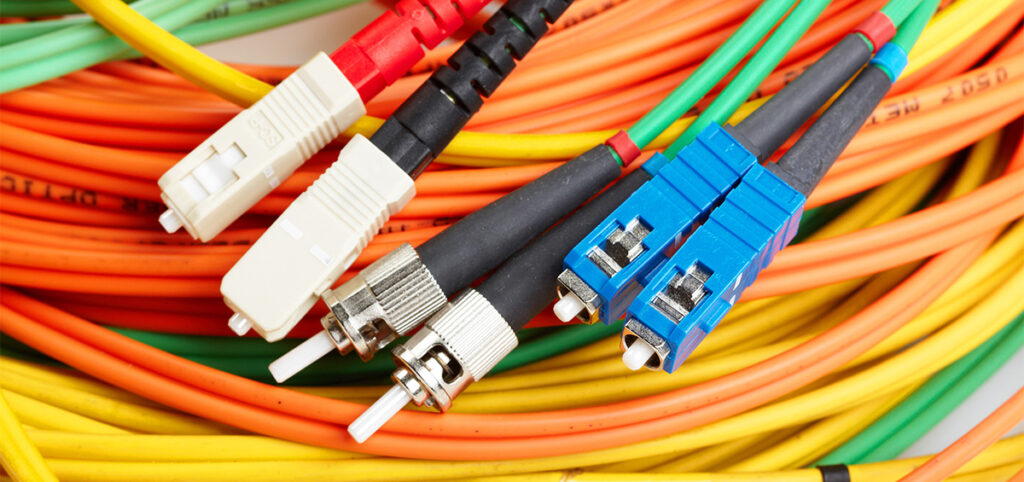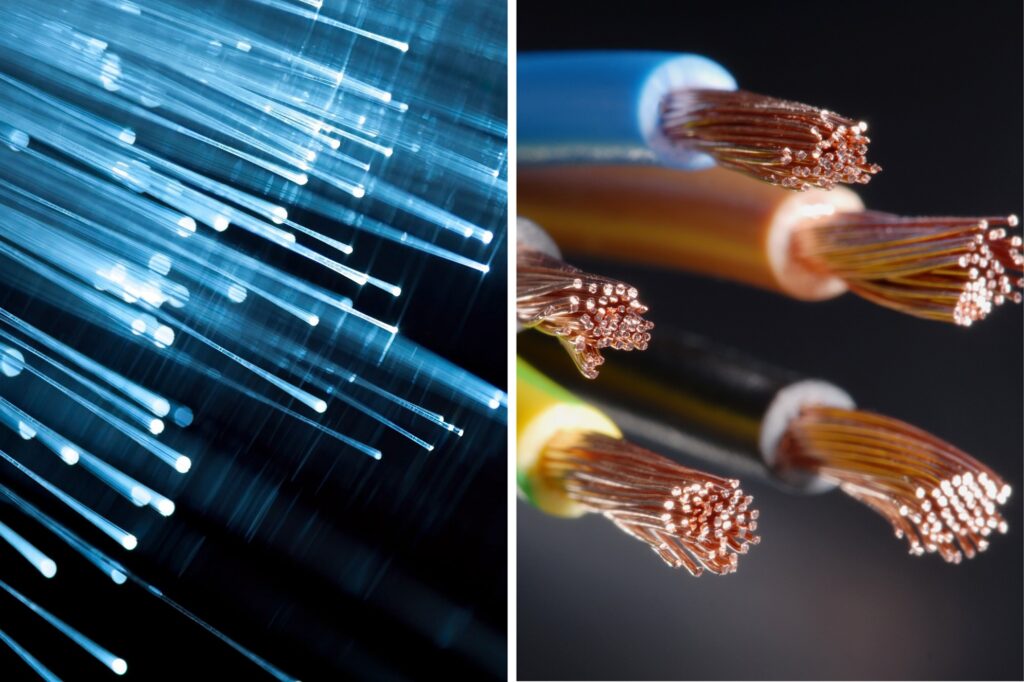In today’s fast-paced digital world, the demand for high-speed data transmission has never been greater. From streaming movies and online gaming to remote work and cloud computing, we rely on fast and reliable internet connections for nearly every aspect of our lives. Two primary contenders in data transmission are fiber optic cables and copper wires. In this article, we will explore the main differences between these two technologies, shedding light on their advantages and unique features.
Fiber Optic Cable: Advantages and Unique Features

Source: rfindustries.com
Fiber optic cables, as the name suggests, use thin strands of glass or plastic to transmit data in the form of light pulses. This technology offers several key advantages, especially when it comes to data cabling for commercial businesses. Firstly, fiber optic cables can transmit data at incredibly high speeds, which is crucial for businesses that rely on seamless connectivity to support their operations. With their ability to carry large amounts of information over long distances, fiber optic cables have become the backbone of modern telecommunications networks, providing reliable and efficient data transmission. Moreover, their immunity to electromagnetic interference ensures that commercial businesses experience clearer and more consistent data transmission, avoiding disruptions and downtime.
Copper Wires: Traditional Choice with Its Own Benefits
Copper wires have been the traditional choice for data transmission for many years. They have proven their reliability and have been widely adopted across various industries. One of the primary advantages of copper wires is their lower cost compared to fiber optic cables. Copper is a widely available material, making it more affordable for installations and upgrades.
Furthermore, copper wires are compatible with existing infrastructure, making it easier to integrate them into established networks. This compatibility is particularly valuable for businesses that have invested in copper-based systems and do not wish to overhaul their infrastructure.
Main Differences: Speed, Capacity, Reliability, and Future-Proofing Considerations

Source: uk.prysmiangroup.com
When comparing fiber optic cables and copper wires, several main differences stand out. Firstly, fiber optic cables offer unparalleled speed. They can transmit data at the speed of light, allowing for near-instantaneous transfer of information. Copper wires, although capable of high speeds, cannot match the velocity of light and therefore have inherent limitations in terms of maximum data transmission speeds.
In terms of capacity, fiber optic cables outshine copper wires once again. Their ability to carry vast amounts of data over long distances without signal degradation makes them the ideal choice for high-bandwidth applications. Copper wires, on the other hand, have limited capacity and are more prone to signal loss over long distances.
When it comes to reliability, fiber optic cables have the upper hand. They are immune to electromagnetic interference, ensuring stable and consistent data transmission. Copper wires, while generally reliable, can be affected by electromagnetic interference, leading to signal disruptions and potential data loss.
Conclusion
In conclusion, fiber optic cables, and copper wires both have their merits and are suited for different scenarios. While copper wires remain a cost-effective choice for certain applications, fiber optic cables provide high-speed, high-capacity, and reliable data transmission. As our digital needs evolve, investing in fiber optic infrastructure offers a future-proof solution that can meet the demands of tomorrow’s data-driven world.



